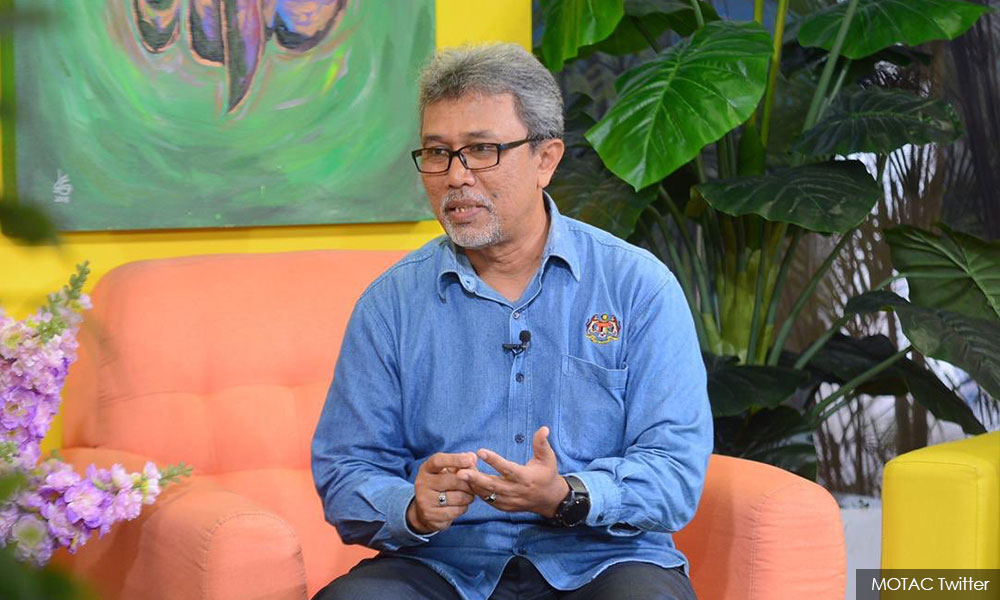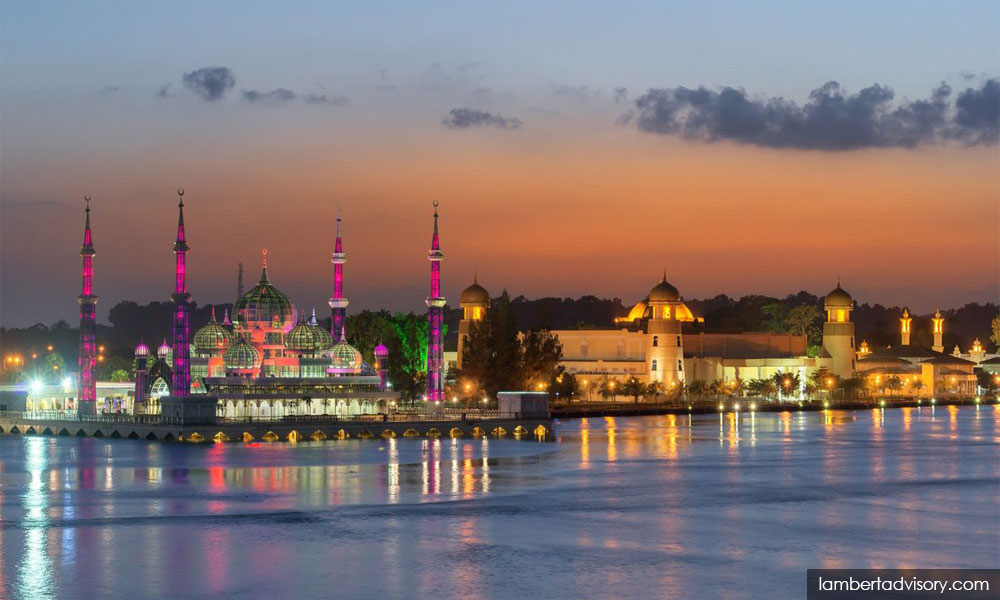Time seems to have stood still in Kampung Cina. Located along Jalan Bandar near the mouth of Sungai Terengganu, it is Kuala Terengganu’s very own Chinatown with a history that dates back to the 18th century.
Little has changed in the enclave, except for more recent add-ons such as street art and murals that adorn the walls of the narrow side lanes, and the gateway, complete with dragon and lantern carvings, welcoming visitors to Kuala Terengganu.
The double-storey shophouses that line both sides of the main road, featuring traditional Chinese architectural elements and believed to be over 200 years old, are still intact.
The sundry shops, restaurants, and coffee shops, as well as Chinese temples, located there, are still thriving and are operated by the descendants of the original owners.
Kuala Terengganu’s Chinatown was among the places a group of journalists visited during a media tour of Terengganu’s heritage gems, organised by the National Heritage Department (NHD) at the end of September.
Their walking tour in the state capital started at Hotel Seri Malaysia at Jalan Bukit Pasir, from where they explored the area near Sungai Terengganu which used to be a transit point for seafaring Chinese traders in the past.
Next was Chinatown and its row of shophouses along a three-kilometre stretch of Jalan Bandar. As a tribute to the past leaders of the local Chinese community here, their portraits, etched into marble slabs, are mounted on a wall at Lorong Kenangan.
Chinatown, which has been nominated for entry into Unesco's world heritage list, is among the destinations in Terengganu that the NHD is trying to promote as heritage tourism sites.
Heritage mosques
The then NHD director-general Mesran Mohd Yusop said heritage-based tourism will expose visitors to the history of an area deemed as a heritage site.
Its interesting history, along with the beauty of the architecture of the structures in a heritage site, will add more value to the attraction and also give visitors an opportunity to explore the area’s archaeological relics.
“Malaysia has many heritage sites that can be turned into attractions for domestic tourists, considering that our nation’s international borders are still closed due to the Covid-19 pandemic.
“For Terengganu, this is a good time to promote its heritage to visitors from other states. In fact, I’m sure even many people residing in this state have probably not had the opportunity to explore these heritage sites,” said Mesran, who was recently appointed director-general of the National Culture and Arts Department on Dec 7.
Terengganu is also known for its fascinating Islamic architecture and, as proven by the discovery of Batu Bersurat – an inscribed stone – in 1887, it was one of the earliest parts of the peninsular to accept Islamic teachings. In fact, the state has several mosques built more than a century ago.
No trip to this east coast state is complete without visiting some of its mosques that are steeped in history, such as Masjid Kristal, Masjid Abidin, Masjid Hiliran, and the Tengku Zaharah floating mosque, all located in Kuala Terengganu.
According to Mesran, Masjid Hiliran, Masjid Abidin, and Istana Maziah are three of the 14 heritage sites in Terengganu that have been gazetted as national heritage sites.
“Gazetting them (as national heritage areas) will add more value to the sites in the tourism sector. By recognising their heritage value, the buildings will also be preserved in their original state,” he said.
The white-coloured Masjid Abidin, which is also known as the White Mosque or Big Mosque, is one of the oldest and most magnificent looking mosques in the state. Originally a wooden palace, it was built by Sultan Zainal Abidin II sometime between 1793 and 1808.
Masjid Abidin chief imam Wan Mohd Hazim Wan Mohd Hashim said the mosque was rebuilt with bricks in 1852 and has since then been modified several times to accommodate the growing congregation.
He said the mosque is open to visitors, including non-Muslims and foreigners, who wish to learn more about Islam.
Masjid Hiliran, meanwhile, is about 200 years old and it once served as the state’s first Arab school. Declared a national heritage site in 2019, the mosque is unique in its own way.
It has a well, called Telaga Mandi Gajah Putih, that was believed to have been built during the reign of Sultan Zainal Abidin III (1881-1918). According to oral history, the well was constructed out of egg white, honey, sand, and bricks.
Apparently, the well was built to bathe a white elephant that was presented to Sultan Zainal Abidin III by the Siamese King Chulalongkorn.
Nine more historical sites to be gazetted
Meanwhile, the authorities have identified another nine historical areas in Terengganu to be gazetted as heritage sites under the National Heritage Act 2005. These comprise Kenyir Lake and Bewah Caves in Hulu Terengganu and seven historical sites in Bukit Besi, Dungun.
Mesran said before gazetting a place or building as a heritage site, the government would announce its plan to the general public to get their feedback.
“Usually the state government will make the recommendation based on the criteria set under the National Heritage Act, and it will be evaluated by a special committee comprising relevant experts who will also visit the site concerned,” he explained.
He said even though the Heritage Commissioner has the final say on the gazetting, the approval of the state government will also be sought before a building or place is gazetted as a national heritage site.
The process of gazetting a site or building is often a lengthy one because a comprehensive study has to be done first and the approval of the land or building owner has to be secured as well.
“After the completion of the documentation work and studies, it has to go through the Attorney-General’s Chambers, and only then can we gazette the site,” Mesran added.
He also said that once a site or building is gazetted as a national heritage, the property will remain in the hands of the original owner who, however, is not allowed to make any large-scale modification.
“Development can be carried out but it must be done with the approval of the authorities,” he said, adding that before carrying out any development on a heritage site, the owner must submit an application seeking the necessary approval under Section 40 of National Heritage Act.
“The reason for this is that we want to preserve the original state of the site or building.”
- Bernama






No comments:
Post a Comment
Note: Only a member of this blog may post a comment.